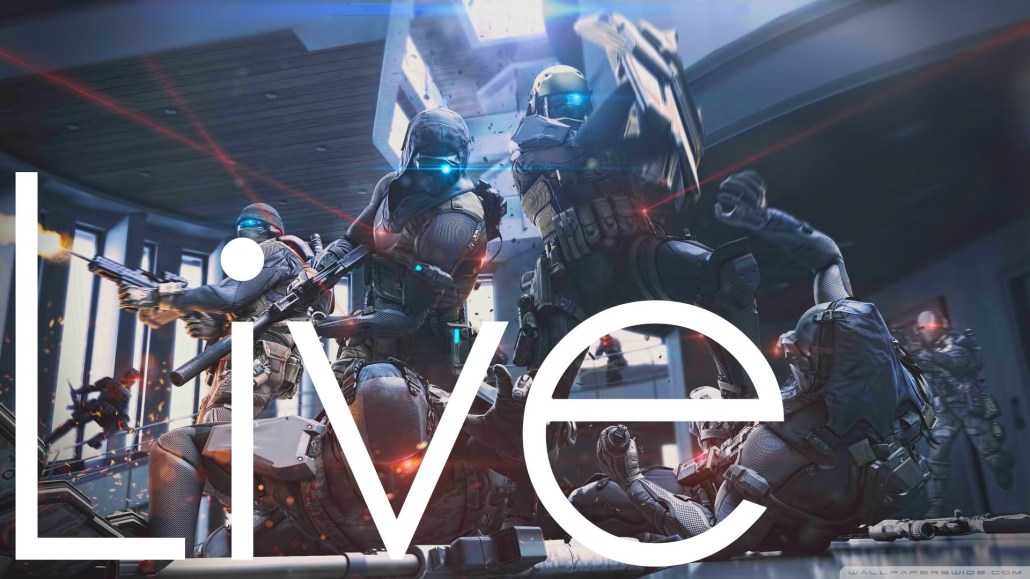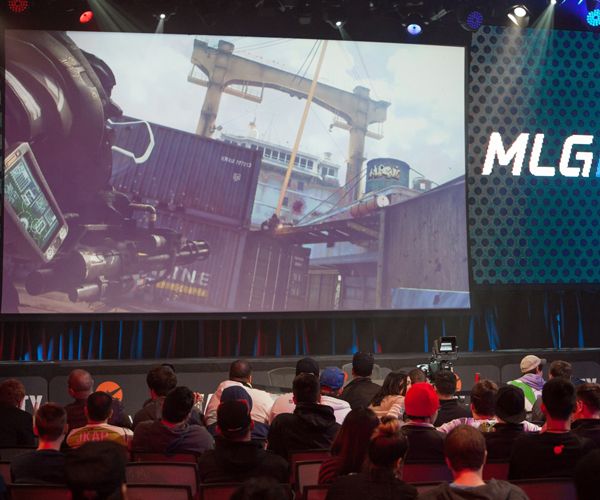Register by Jan 13 to save on passes and connect with marketers from Uber, Bose and more

When you hear “competitive gaming,” do you imagine a few guys in sweatpants vying for Mario Kart supremacy in a basement somewhere? Try a stadium in Seoul with 40,000 screaming fans watching as the most talented League of Legends players in the world compete for first place — and $1 million. Yes, really.
An estimated 71.5 million viewers watched a competitive gaming event in 2013, and ESPN broadcasted a major tournament for the first time last year.
Meanwhile, enthusiasts craving live competitive gaming, or esports, on a regular basis have gravitated to MajorLeagueGaming (MLG.tv). But livestreaming content doesn’t pay for itself, and MLG faces the challenge of serving ads to gamers, an audience that is vehemently anti-advertising.
We talked to Vince Banks, MLG’s senior vice president of global digital media, about how they monetize so much live video content, how mobile is a key to their strategy and how it helps them dodge the dreaded ad block.
Are you mainly live covering gaming tournaments?
Sometimes we do live coverage of events like E3; we co-branded the XGames last weekend. But yeah, [gaming-related] events anywhere, we’re streaming and covering them. And there’s a shelf life to it. People aren’t going to re-watch the live competitions; about 95 percent watch it during. That could change once we push our VOD content syndication, a big part of 2015.
That sounds a lot like traditional sporting events. Are gamers spending large blocks of time watching these live streams the way others might watch college football?
It’s going to vary by event. Some are going to be on for three to six hours a day watching on the weekend versus during the week where average time consuming content is about 40 minutes. We saw 9.5 million hours consumed on MLG.tv this January.
And like any sporting event, when it comes down to consuming content for hours on end, you want it to be comfortable and easy. As a gamer you definitely play on a desktop or console, but we’re looking at our mobile devices as places to consume TV shows. People have no problem getting on their couch with a mobile phone or tablet and consuming content that way.
I couldn’t imagine sitting at a computer for six hours watching an event. The goal is to get the best user experience possible. Mobile, consoles and connected TVs allow for that.
You launched a mobile app recently to better capture that audience. That’s a bit of an investment. How’s it paying off?
Well, 30 percent of our audience is consuming it via mobile in-app, but it counts as about 50 percent of our inventory. And the reason for that is ad block.
Gamers don’t like ads, so we do have a high ad-block rate. On desktop, it’s easy to add onto your browser. On mobile, installing ad block wasn’t worth it and gave up too much usage of your mobile device. So we shifted there in the hopes of monetizing those impressions and seeing people we might not have seen before. We’re now seeing new uniques because they’d previously never seen an ad.
Since your app was designed specifically with video in mind, is there anything that sets your app apart from other publishers?
We want to make sure we can keep it as premium as possible. We moved to LiveRail last quarter. But, in general, desktop is oversaturated with banner ads, and we’re treating mobile as a different channel. The way we’re focusing it is as a straight mobile video consumption app. And that’s helped us a lot. If you look at our [mobile] MLG app, there are no 320×50 display ads and no interstitials in-between. It’s just pre-rolls and mid-rolls.
Still, the ads are interruptive. And gamers can be a vocal audience. How do you make sure you don’t miss crucial moments in live matches?
Unlike VOD content, with set times for pre-roll and mid-roll, we have to decide in-production. If a competition lasts 45 minutes, we might only go to a minute and 30-second break, so three 30-second pre-rolls. It’s about making that call and minimizing lag time when you’re calling all of those pre-rolls.
Wait, lag time?
If there’s five seconds of lag time, with a three-pod [i.e. a slot of three ads], there’s a five-second delay with all those pieces. If we have a larger pod, that can be a minute lost of live content. We can’t get that back.
And gamers are okay with that?
No one likes it. People are there to stream content. We’ve heard of different models where you sign up for premium and don’t get ads, but right now as a free media consumption platform, it’s part of that double-edged sword; it’s part of the business.
Any way to limit the interruptions?
In 2015 we want to get off of the open exchanges and go through more of our programmatic preferred deals and marketplaces so we are able to frequency cap people. It’s not about oversaturating them with ads during one event, but reaching them while they’re consuming content over MLG and our affiliate sites.
How are the mobile metrics looking?
Either double or triple the industry average. Our video click-through rates have been five to seven percent these past campaigns, and completion rates are in the high 90s.
And how has the move to mobile video affected your ad selling?
Since launching our app, we’ve seen our consumption growing very rapidly, we knew we had to partner with the best technology. We wanted LiveRail, for example, so they could build an ad offering.
Still, doing it all live isn’t easy. What advice can you give buyers to help boost ad performance?
We clarify when situations are going to be better: whether they should be a pre-roll when users change channels, etc. Because if you’re doing mid-roll in an event that just started 20 minutes ago that’s going on for six hours, the chances of them converting and missing that piece of the event are much lower.
How are other players getting mobile video wrong?
We don’t want to turn our mobile in-app channel consumption into a miniature desktop environment. We think about how we consume media rather than just thinking how we can highlight as many channels as possible.
That’s the biggest thing that people forget: Would you consume the content in this format? If not, what would turn you off?
More from Digiday

Omnicom Media’s Adamski: clients are the only ones not complaining about principal media
The global CEO of Omnicom Media now has six agency brands and Acxiom under his control, and he’s expected to maintain consistent growth among them.

Introducing AI Marketing Strategies: A new event from Digiday, Glossy and Modern Retail
Digiday, Glossy and Modern Retail have closely tracked the rise of AI in marketing for the better part of a decade. In that time, the technology has moved far beyond chatbots, marketing automation and ad optimization. Today, AI tools are becoming a critical part of marketers’ daily workflows. Now Digiday will host its inaugural AI […]

OpenAI’s countdown: monetization, ads, and a Google-shaped threat
With fierce competition from Google et al, the clock is ticking for the AI company to launch its ad business.








